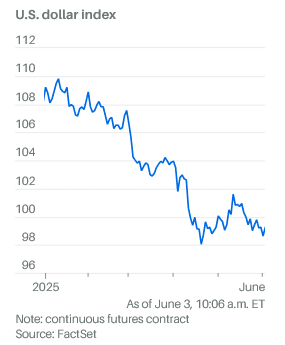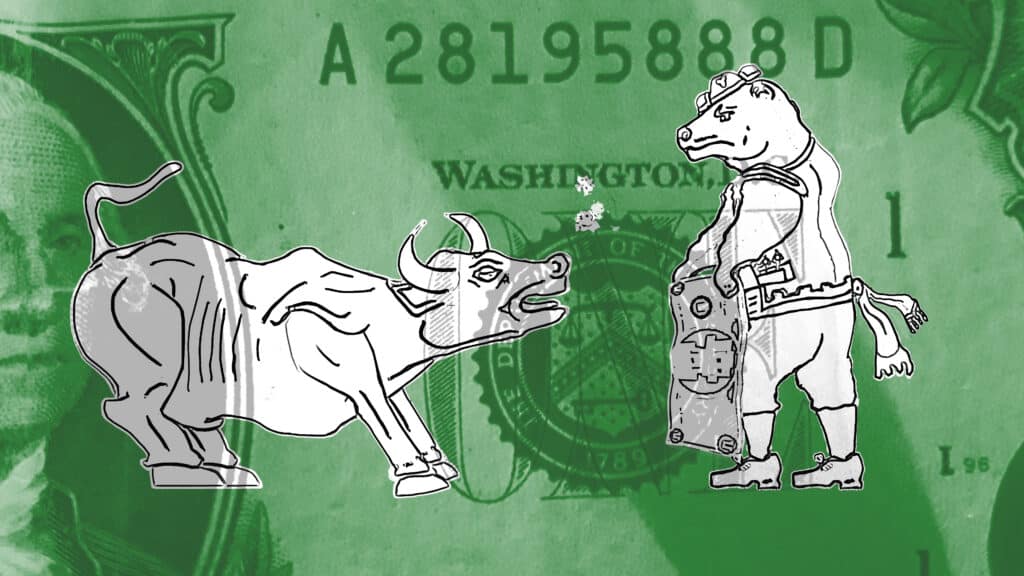President Donald Trump’s rapid tariff rollout has slowed U.S. imports to a trickle, weighed on global growth prospects, and rekindled inflation concerns.
It has also, in part, led to the worst start to the year for the U.S. dollar on record, according to Dow Jones Market Data.
The 8.4% slump over the first five months of the year, in fact, has the U.S. dollar index which tracks the greenback against a basket of six global currencies, trading near to the lowest levels since the spring of 2022.
Bank of America calls foreign exchange rates the most important price in an open economy, noting they act as both an asset class as well as a “powerful transmission mechanism of macro policies.”

The signal currently emanating from that particular tower, however, has the potential to undermine the greenback even further.
Buried deep within the federal tax and spending bill passed last week by House lawmakers and currently being marked-up by the Senate, is section 899. Dubbed the “revenge tax,” the new rule would allow the government to apply new taxes on foreign investment from countries deemed to have unfair or discriminatory tax schedules of their own.
That could put investors from Europe, for example, at risk of having to pay extra fees when repatriating capital gains, dividends, or U.S. Treasury bond coupon payments. Europe’s digital services taxes on U.S. tech giants has been a keen focus of the Trump administration’s ire and an oft-cited example of the bloc’s non-tariff barriers.
“This potential power play against foreign holdings of US-based assets could eventually slow interest in recycling surpluses into U.S. capital markets,” said John Hardy, global head of macro strategy at Saxo Bank. “That’s obviously dollar-negative in flow terms on major players looking for alternatives to U.S. assets.”
Some of those players are already on the move. The euro, the heaviest weight against the dollar in global foreign exchange markets, is up 11% against the greenback this year. That is despite a much weaker economy and a central bank that has cut rates twice this year, and will likely do so again Thursday in Frankfurt.
Japan’s yen +0.83%, which pays virtually no interest on short-term investments, has gained 9%. The British poundGBPUSD-0.33%, despite Bank of England rate cuts and a slowing economy, is up 8%.
Trump’s latest moves on tariffs, which include a steepened 50% levy on steel and aluminum imports and a fresh attack on China’s alleged violation of a trade truce reached in Geneva last month, are also heaping renewed pressure on the bruised greenback.
“A shift to a more confrontational stance on trade between the U.S. and China (and) any early end to the deal, which lasts until Aug. 12, would hit risk assets and the dollar again,” said ING’s global head of markets Chris Turner.
U.S. exporters might enjoy the added advantage of a weaker dollar, and companies with overseas profits will find them cheaper to repatriate as the greenback slides. But the broader effect could be chilling.
America’s global trade deficit is also responsible for attracting billions in domestic investment from overseas, driving stock prices higher, Treasury bond yields lower and providing longer-term support for the greenback.
And when the country’s fiscal position is weakening and its overall debt levels are forecast by the Congressional Budget Office to top $50 trillion by the middle of the next decade, keeping those investments flowing is crucial.
Read the full article HERE.


